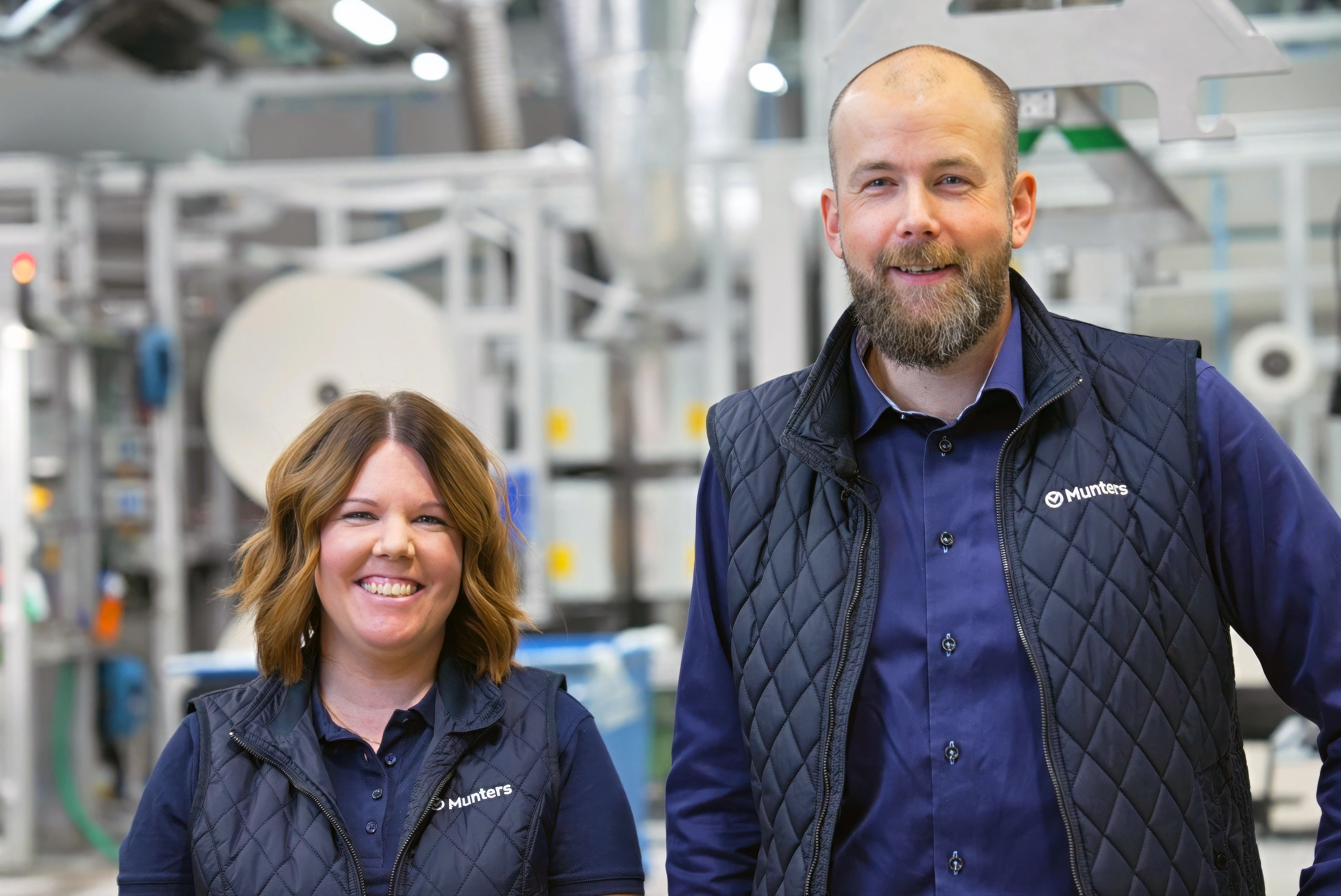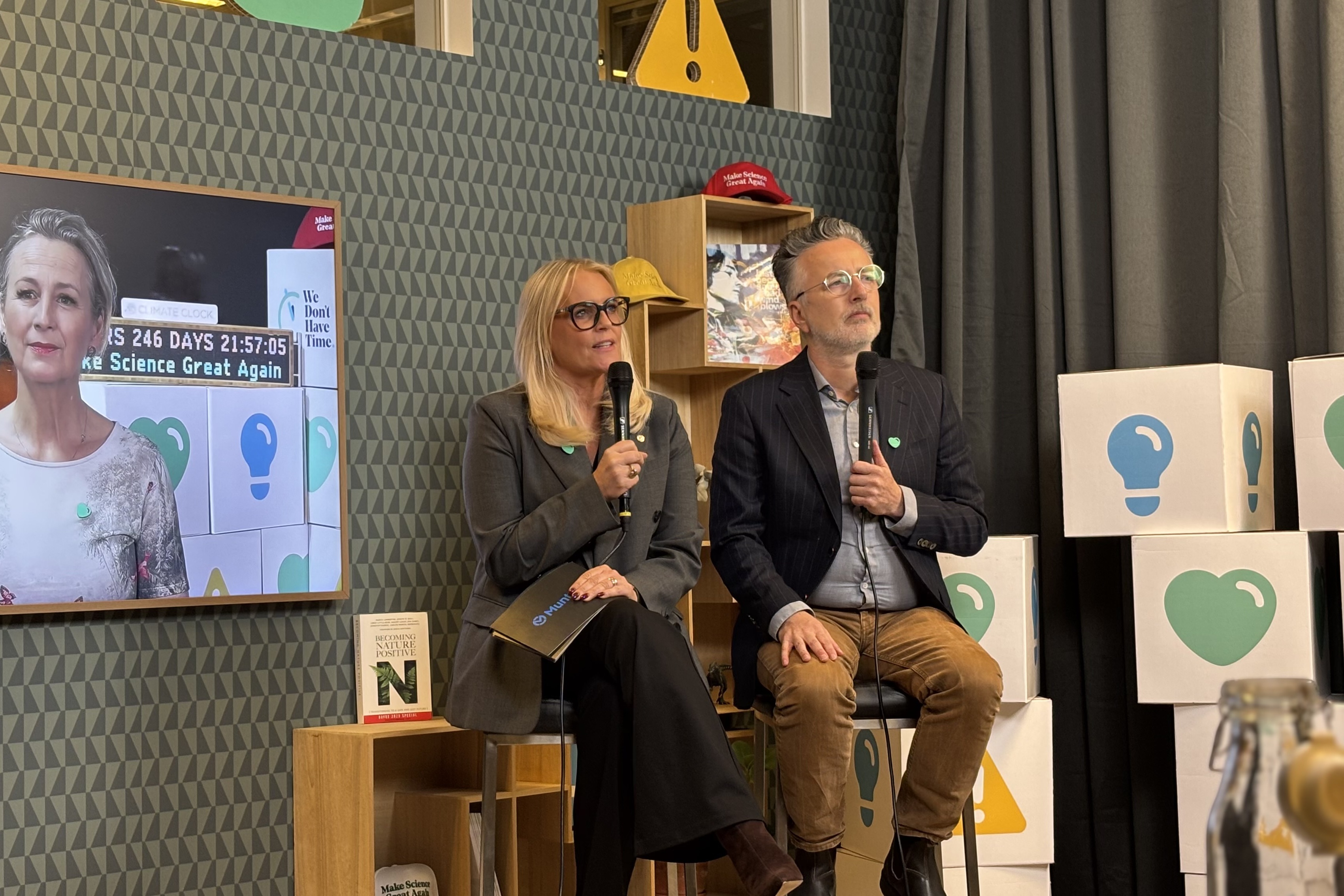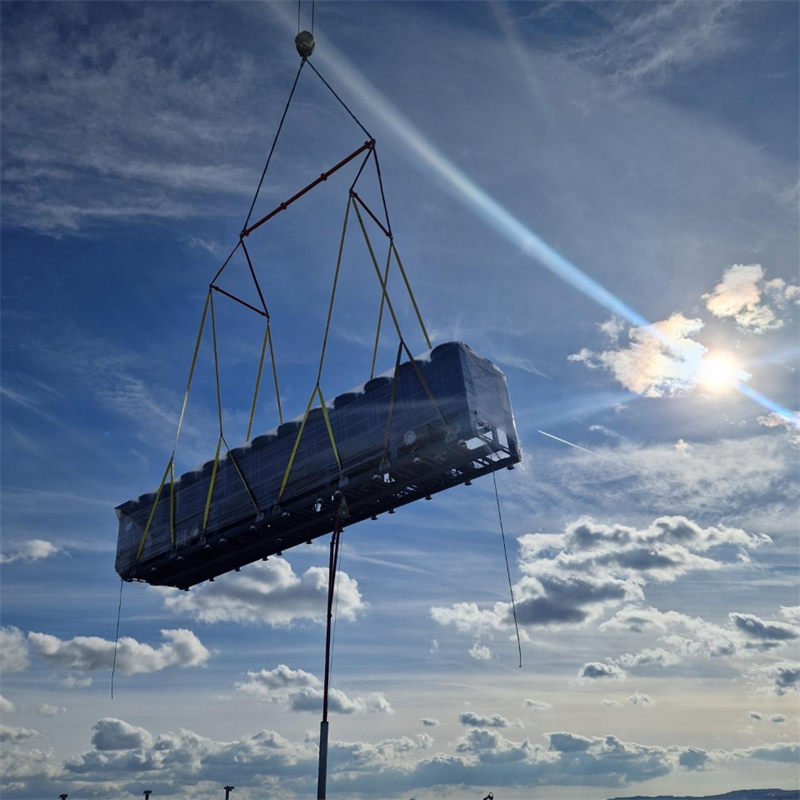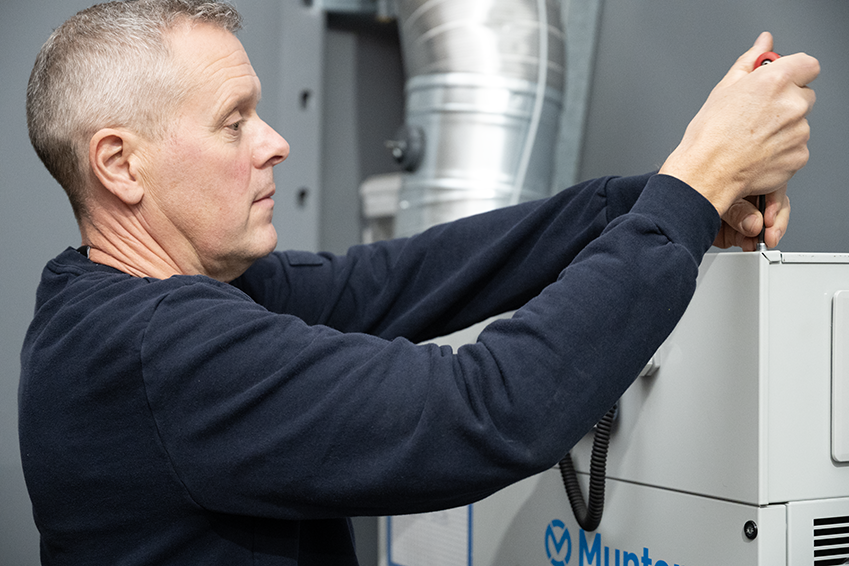
Munters teams up to turn salt residue into sustainable building materials
Oct 16, 2025
What do you do with several tons of excess salt? The easy, though costly, solution is to send it to landfill. But at Munters factory in Tobo, that wasn’t an option.
Every day, the Tobo site produces dozens of desiccant rotor blocks. These honeycomb-structured substrates are the core of Munters dehumidification technology, designed to capture moisture from the air. To form the blocks, the factory uses a non-toxic gel made from salt and other substances.
Previously, wastewater from this process was treated by the municipal wastewater treatment plant. However, due to stricter requirements from the municipality, Munters had to find a more sustainable solution.
Instead of filtering the salt and sending it to landfill, the team at Tobo took matters into their own hands. They installed equipment to separate the salt, hoping to eventually find a partner who could put it to good use.
“We could have gone for a quick solution, just filtered it through some mesh and sent it off. But we wanted to do it properly,” says Tommy Strömberg, plant manager at Munters in Tobo.
However, the challenge quickly became clear.
“We realized we were going to have huge amounts of salt to deal with.”
The team began exploring options, reaching out to paper mills and even the municipality, considering whether the salt could be used on icy roads in winter. But none of the leads panned out.
Then Munters was introduced to NOAH, a Norwegian company running a pilot project to produce clean, white gypsum from recycled materials. NOAH was already working with Stockholm Exergi, which supplied fly ash. Munters salt residue turned out to be the missing piece of the puzzle.
“They told us about their idea and what they wanted to do, so we gladly sent them a sample of our salt,” says Strömberg.
NOAH was impressed.
“They can source similar substances elsewhere, but not as clean as ours.”
This marked the beginning of a cross-industry collaboration.
Today, Munters sends around 30 tons of salt per week from Tobo to NOAH’s pilot facility in Langøya, outside Oslo. Initially, NOAH will produce 6,500 tons of pure gypsum from the recycled waste, replacing long-distance virgin raw materials.
The gypsum is then sent to Norgips, where it’s turned into plasterboard, commonly used in construction for walls and ceilings.
As for Munters Tobo, the reduction of landfill waste is part of their zero-landfill ambition.
“We still produce waste, but it’s all taken care of,” says Strömberg. “For instance, the scrap from cutting and processing the dehumidification material is used by another company to create a fire-combustion material for heat-recovery boilers.”
The initiative in Tobo contributes significantly to Munters circularity agenda.
The company is currently exploring ways to integrate circularity into product development, such as selecting more sustainable materials, designing for reuse and recycling, and reducing resource consumption across its factories.
“Our long-term ambition is to shift from a linear model to more circular processes and business models,” says Andrea Haag, Vice President Sustainability at Munters. “To achieve our vision, collaboration with other industries and authorities will be key. Tobo is a great example of what’s possible when we dare to think outside the box and break down silos.”



